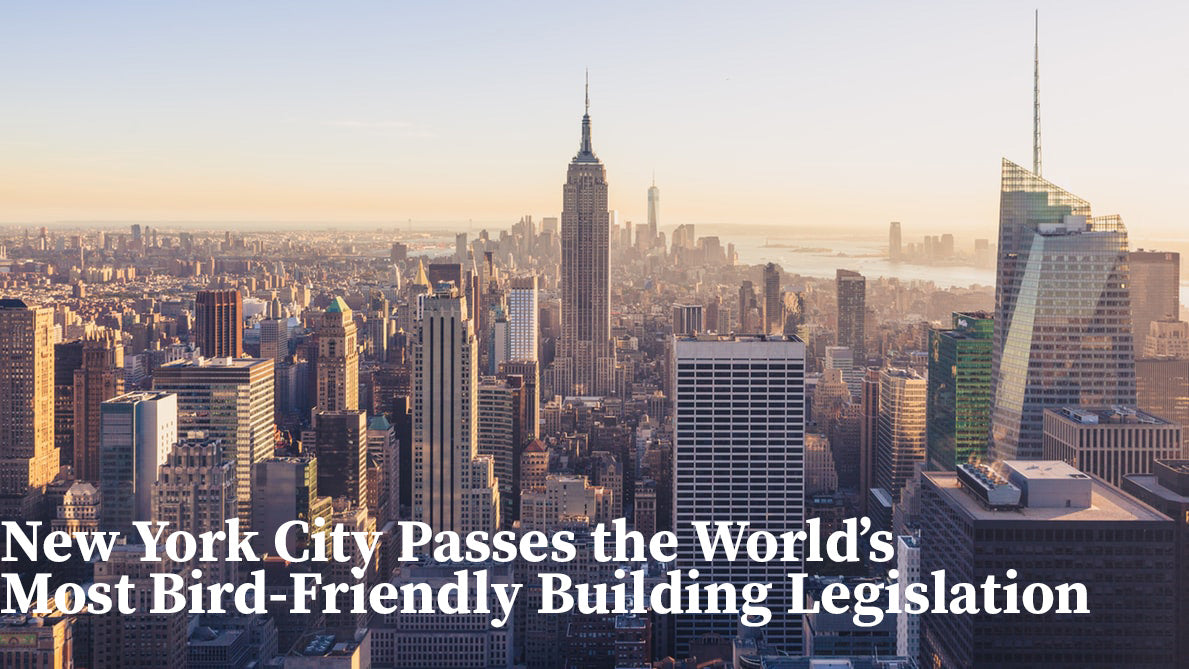Offer
Provide additional details about the offer you're running.
Provide additional details about the offer you're running.
Provide additional details about the offer you're running.

Well folks, it’s been an amazing start to the month of December here in the birding world. In addition to the Christmas season and all of the cheer and togetherness that comes with that, one of the largest cities in North America has given us perhaps the best gift of all.
Earlier this month, the great city of New York proposed ground-breaking legislation that would change the way we build our buildings but also how we protect our beloved birds.
On December 10, 2019, the New York City Council approved Proposed Initiative 1482B – which to date, serves as the most broad-reaching bird-friendly building policy in North America.
The new legislation didn’t come easy and took a number of both community and architectural interests to come together in designing such legislation that would work for all parties involved. Among the key stakeholders involved with the new legislation were the American Bird Conservancy, the New York City Audubon, the New York Chapter of the American Institute of Architects and the Bird Safe Building Alliance.
The news couldn’t come at a better time, with various reports surfacing earlier this year about the peril of our backyard birds, something drastic has to be done and this is certainly a step in the right direction.
“Bird-friendly building design should not be seen as an add-on or an extra,” said Dr. Christine Sheppard, Glass Collisions Program Director for American Bird Conservancy. “Many strategies for controlling heat, light, and even security can be bird-friendly strategies, too. These can be incorporated into almost any building style, but should be built into project design from the outset to minimize additional costs. That's why this kind of legislation is so important.”
Accounting for approximately a billion bird deaths each and every year, historic bills like these are something we expect to continue to see into the future. Having been passed by one of the world’s most iconic cities, our hopes is that this trend continues in many other metropolitan areas throughout our flyways here in North America.
The bill goes into effect one year from its passage, at which point all newly constructed or altered buildings in New York will be required to adhere to the new standards.
High Quality Blend